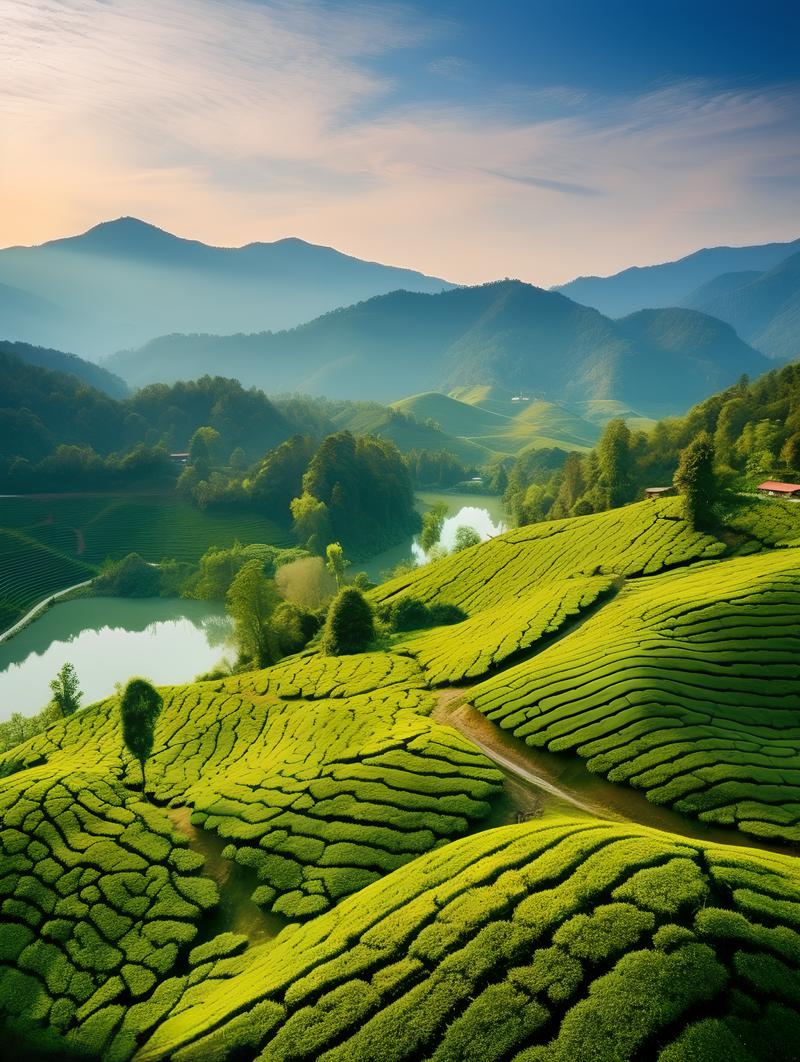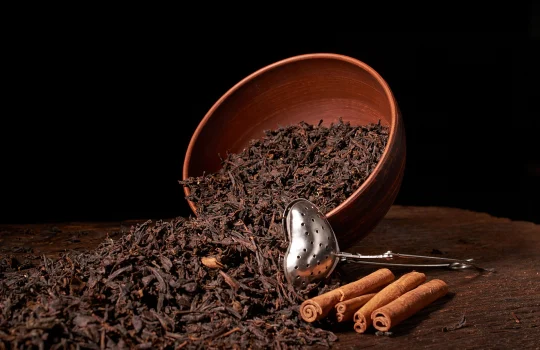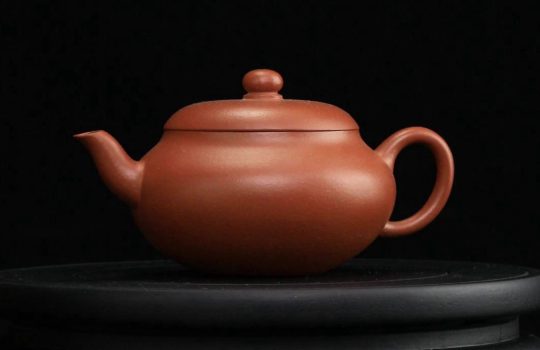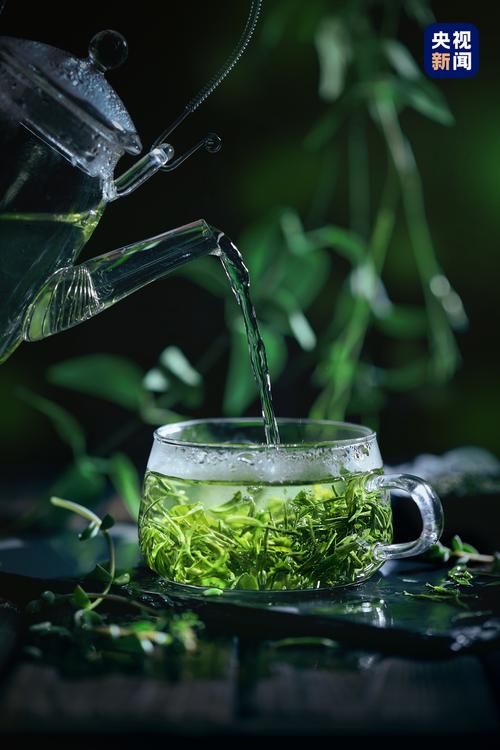China’s Top Ten Famous Teas
China boasts a vast array of tea varieties, with famous teas being the jewels of the tea world. What exactly constitutes a famous tea? What criteria must a tea meet to be considered a famous tea? While there is no universally agreed-upon definition of a famous tea, it is generally acknowledged that a famous tea must exhibit unique characteristics and styles in terms of colour, aroma, taste, and appearance.
In 1959, the national ‘Top Ten Famous Teas’ evaluation conference selected China’s ‘Top Ten Famous Teas,’ which are West Lake Longjing, Dongting Biluochun, Huangshan Maofeng, Lushan Yunwu, Lu’an Guapian, Junshan Yinzhen, Xinyang Maojian, Wuyi Yancha, Anxi Tieguanyin, and Qimen Black Tea. This standard has undergone several changes since then. At the 8th Dalian International Tea Culture Expo held from 6th to 10th July 2012 at the Dalian Xinghai Convention and Exhibition Centre, the latest ‘Top Ten Famous Teas of China’ were selected. The newly announced list largely followed the results of the 1959 selection, with only a change in order, as Lushan Yunwu was replaced by Duyun Maojian.
1. West Lake Longjing
West Lake Longjing, the crown jewel of Chinese teas, is a green tea produced in the mountains surrounding West Lake in Hangzhou, Zhejiang Province. It is renowned worldwide for its ‘four excellences’: green colour, fragrant aroma, mellow taste, and beautiful shape. The tea-growing history of the West Lake mountains dates back over a thousand years, and it was already famous during the Tang Dynasty. Longjing tea leaves are flat in shape, straight and pointed, with tender leaves, uniform in shape and width, a greenish-yellow colour, smooth and even texture, and consist of one bud and one or two leaves; the bud is longer than the leaves, and the buds and leaves form uniform clusters without stems or fragments, small and delicate, lifelike. Longjing tea has a fresh and fragrant taste that is refreshing to the palate. Counterfeit Longjing tea often has a grassy taste, contains more stems, and feels rough to the touch.
2. Dongting Biluochun
Biluochun tea, produced on Biluo Peak of Dongting Mountain in Taihu Lake, Suzhou, Jiangsu Province, is one of China’s famous green teas. Dongting Mountain has a mild climate, fresh air, and a cool summer, providing an ideal environment for tea tree growth and giving Biluochun tea its unique quality characteristics. Biluochun tea has slender tea leaves, visible silver buds, one bud and one leaf, with the bud curled into a white downy shape and the leaf curled into a greenish-blue colour, covered in downy hairs. The leaf base is tender, even, and bright green in colour. Counterfeit Biluochun has one bud and two leaves, with uneven lengths and a yellowish hue. Folk wisdom describes Biluochun as follows: ‘Wire-like strands, spiral shape, covered in downy hairs, one tender bud and three fresh leaves—a rarity since ancient times.’ High-quality Biluochun can be steeped first before adding the tea leaves, yet the leaves will still slowly sink and unfurl, releasing their aroma. This is a sign of robust buds and a quality unmatched by other teas.
3. Xinyang Maojian
Xinyang Maojian is one of Henan Province’s famous local specialities, renowned both domestically and internationally for its unique characteristics: ‘fine, round, smooth, straight, abundant white downy hairs, high aroma, rich flavour, and green tea liquor.’ In his classic work The Classic of Tea, the Tang Dynasty tea master Lu Yu listed Xinyang as one of China’s eight major tea-producing regions, and Xinyang Maojian has since become a representative of Henan Province’s high-quality green teas.
Xinyang Maojian has a tight, slender, round, smooth, and straight appearance, with a silver-green hue and a bright colour. Its aroma is fresh, rich, and vibrant, with prominent white downy hairs. The leaf base is tender, green, and uniform, with a dark green colour, typically consisting of one bud and one leaf or one bud and two leaves. Counterfeit versions have a curled shape, yellow leaves, and no tea aroma.
4. Junshan Yinzhen
Junshan Yinzhen is one of China’s famous yellow teas. Junshan tea originated in the Tang Dynasty and was included as a tribute tea during the Qing Dynasty. The tea grows in fertile soil, mostly sandy soil, with an annual rainfall of approximately 1,340 millimetres and high relative humidity, creating an ideal environment for tea plant growth. Junshan Silver Needle buds are plump, straight, uniform, and covered in downy hairs, with a golden yellow lustrous colour, a fresh and fragrant aroma, a light yellow tea liquor, and a sweet and refreshing taste. When brewed, the bud tips rise to the water surface, suspend vertically, then slowly sink, rise again, and sink again, repeating this process three times, resembling a cluster of bamboo shoots emerging from the ground or silver knives standing upright. Counterfeit Silver Needle has a grassy aroma, and the needles cannot stand upright after brewing.
5. Lu’an Guapian
Lu’an Guapian, also known as ‘slice tea,’ is produced in the Qiyun Mountains of Lu’an and Jinzao counties in Anhui Province. It is a specialty green tea and a nationally renowned historical tea. Lu’an Guapian is famous throughout history and across the globe, not only for its superior quality but also due to its unique origin and production process. The local high mountains provide a mild climate and misty surroundings, creating an ideal environment for tea tree growth. The tea leaves are flat and resemble melon seeds, with each leaf free of buds and stems. The leaves are green and lustrous, slightly overlapping, with a fresh aroma, emerald-green liquor, a sweet aftertaste, and a thick, bright leaf base with a rich texture. Counterfeit tea has a bitter taste and a yellowish colour.
6. Huangshan Mao Feng
Huangshan is one of China’s most scenic natural tourist attractions, shrouded in mist year-round, with peaks emerging above the clouds like islands floating in the sky, hence the name ‘Sea of Clouds.’ The famous green tea Huangshan Mao Feng grows in this mystical mountainous region, inheriting its enigmatic characteristics.
Huangshan Maofeng has a delicate, slightly curled appearance, with plump, uniform tea buds that are soft and tender, featuring fine downy hairs, resembling sparrow tongues in shape. The leaves are thick and golden yellow; the leaf base forms clusters of buds and leaves, thick and vibrant, with a tender green lustre, a fresh aroma, and excellent durability in multiple infusions. The tea has a clear, apricot-yellow, bright colour, a rich and mellow taste with a sweet aftertaste, making it a premium tea. Counterfeit tea has a earthy yellow colour, a bitter taste, and the leaf base does not form buds.
7. Qimen Black Tea
Qimen Black Tea, abbreviated as Qihong, is a premium black tea. It is produced in the southwestern part of Anhui Province, where the climate is mild, sunlight is moderate, rainfall is abundant, and the soil is fertile, making it highly suitable for tea plant growth. As a result, Qimen Black Tea has long been renowned worldwide for its ‘high fragrance,’ ‘rich taste,’ ‘beautiful shape,’ and ‘vibrant colour.’
Keemun Black Tea has a reddish-brown colour, with tight, slender, and uniform leaves. It has a fresh and fragrant aroma with a hint of honey, a rich taste, and a sweet, mellow, and harmonious flavour. Even when mixed with fresh milk, it retains its aromatic and mellow qualities. Counterfeit tea, on the other hand, often contains artificial colouring, has a bitter and astringent taste, and uneven leaf shapes.
8. Duyun Maojian
Duyun Maojian, also known as ‘White Hair Tip,’ ‘Fish Hook Tea,’ and ‘Sparrow’s Tongue Tea,’ is a specialty green tea from Guizhou Province. It is produced in Duyun City, Guizhou Province, with the main production areas located in Tuanshan, Shaojiao, and Dacuo. The region has mild winters and cool summers, with deep soil layers, loose and moist soil, and acidic or slightly acidic soil conditions. These unique natural conditions not only provide favourable conditions for the growth and reproduction of tea plants but also contribute to the distinctive style of Duyun Mao尖.
Duyun Mao尖 has a tight, slender, curled appearance with visible downy hairs, a green and lustrous colour, and small, thin leaves. Each leaf consists of a bud and a young leaf, resembling a sparrow’s tongue. Moreover, its internal qualities are also distinctive: the tea liquor is clear, the taste is fresh and sweet, the aroma is delicate and fresh, and the leaf base is tender, green, and uniform. Counterfeit tea, however, has a bitter and astringent taste, and the leaf base is uneven.
9. Anxi Tieguanyin
Anxi Tieguanyin has a long history and is known as the ‘Tea King,’ one of China’s famous oolong teas. High-quality Tieguanyin, has thick leaves like iron, a beautiful shape resembling Guanyin, often spiral-shaped, with prominent ‘lotus sand green’ patterns, a lustrous surface, green stems, and a natural orchid fragrance. The tea liquor is clear and golden yellow, with a rich and sweet taste, a slight bitterness upon entry that quickly turns sweet, and lingering aroma even after multiple infusions. The leaf base is thick and soft, with a vibrant green colour and red edges, uniform and lustrous, with each tea leaf still attached to its stem.
The production process of Tieguanyin is similar to that of general oolong tea. It is typically sun-dried in the evening, shaken and cooled overnight, fermented by dawn the next day, and then roasted, taking a full day and night. This meticulous production process gives Anxi Tieguanyin a distinct advantage.
Anxi Tieguanyin Counterfeit tea leaves are long and thin, with coarse strands and no green or red
edges. After three infusions, they lose their aroma.
10. Wuyi Rock Tea
Wuyi Rock Tea is produced in the famous Wuyi Mountains of northern Fujian, where tea plants grow in rock crevices. Its appearance features robust, tightly twisted, uniform strands, commonly known as ‘dragonfly
Wuyi Rock Tea head,’ with frogskin-like sand grains on the leaf back, commonly known as “toad
back.” Its internal qualities include a rich, enduring aroma, a thick, lingering taste
bitter, smooth, and refreshing. The tea liquor is orange-yellow, clear, and vibrant, with a uniform and bright leaf base. The edges are crimson or have red spots, the central leaf flesh is yellow-green, and the leaf veins are light yellow. It can withstand 6–8 infusions or more.
Wuyi Rock Tea combines the freshness of green tea with the sweetness of black tea, making it the pinnacle of oolong teas. Its main varieties include ‘Da Hong Pao,’ ‘Water仙,’ and ‘Cassia.’ Counterfeit tea has a weak flavour, lacks depth, and has a dull, lacklustre colour.




